Mevlana Museum (Mevlana Müzesi), Nestled in the heart of Konya, Turkey, stands as a beacon of spiritual enlightenment and cultural heritage. Dedicated to the renowned Sufi mystic and poet Mevlana Rumi (Jalal ad-Din Muhammad Rumi), this museum is not just a historical site; it is a vibrant center of spirituality and reflection. As a UNESCO World Heritage Site, the Mevlana Museum attracts visitors from around the globe who come to pay homage to Rumi’s teachings and to immerse themselves in the rich tapestry of Turkish culture.
Content
How to Get to Mevlana Museum
The Mevlana Museum is located in the city center of Konya, one of Turkey’s oldest cities. Konya is easily accessible from major cities such as Istanbul, Ankara, and Antalya.
- By Air: Konya has its own airport (Konya Airport – KYA) with domestic flights from Istanbul and other major cities. From the airport, you can take a taxi or a shuttle service to reach the museum, which is about 18 kilometers away.
- By Bus: Konya is well-connected by intercity buses. You can catch a bus from cities like Istanbul, Ankara, or Izmir. The bus terminal is not far from the city center, and you can easily take a taxi or public transport to the museum.
- By Train: The high-speed train from Ankara to Konya is a comfortable and scenic option. The train ride takes approximately 1.5 hours, and once you arrive in Konya, a short taxi ride will take you to the museum.
Mevlana Museum Photos

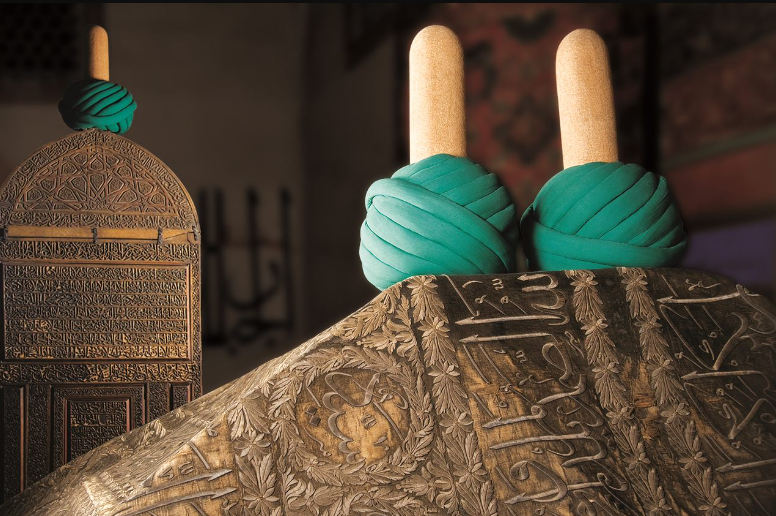
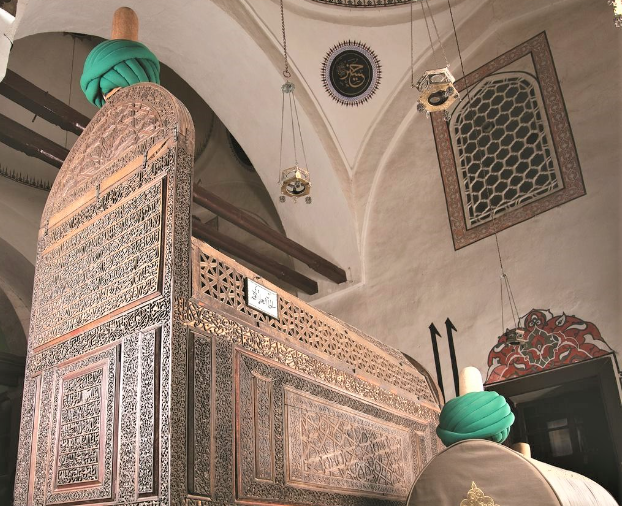
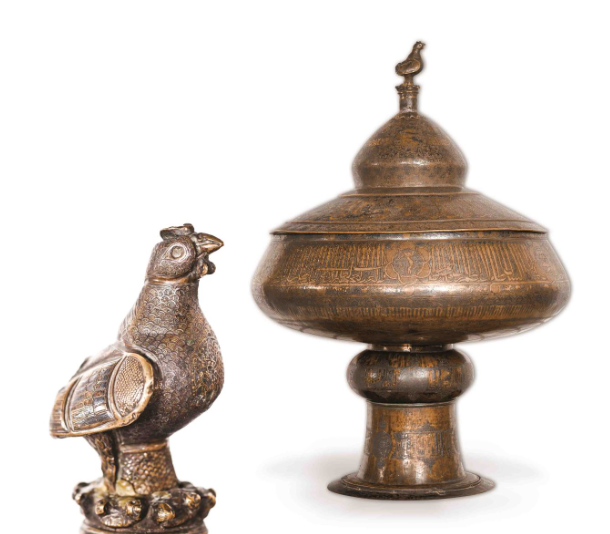
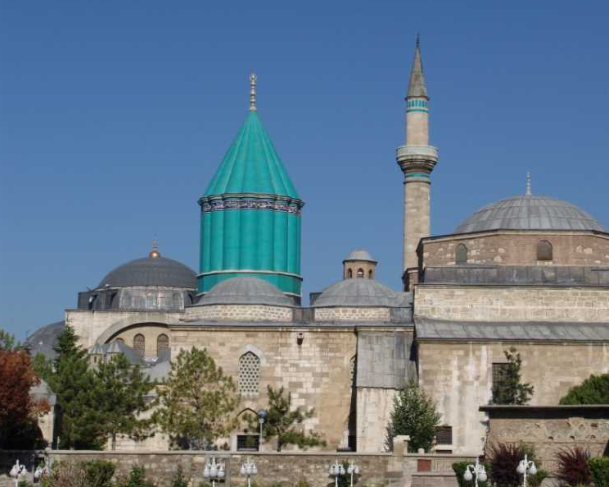
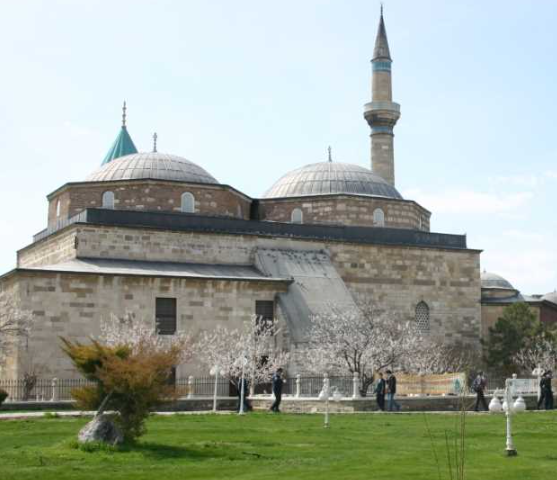
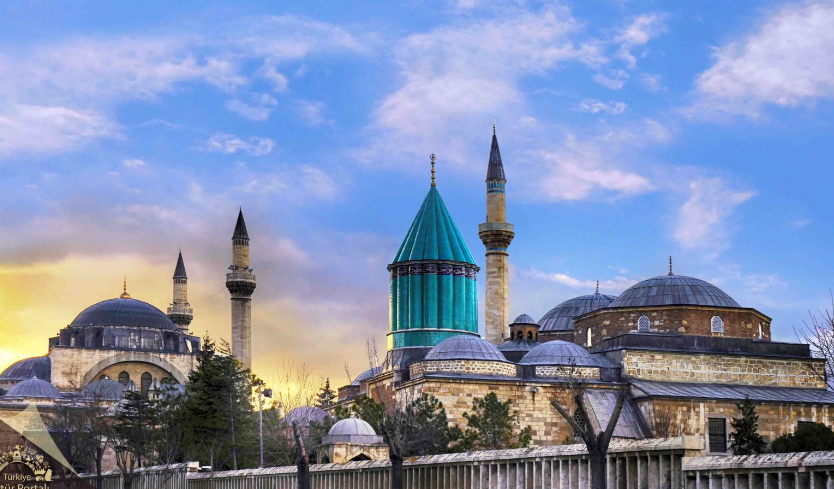
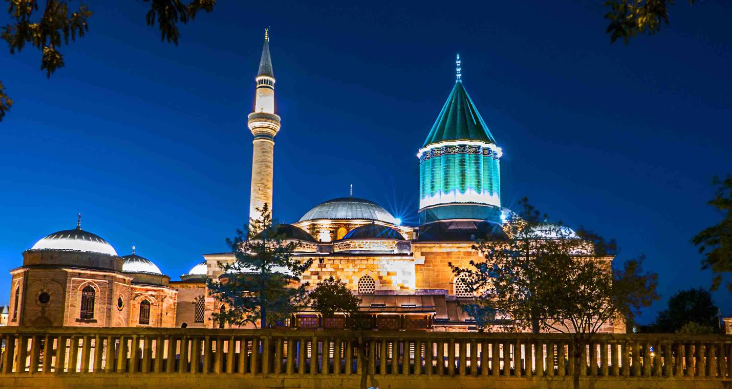
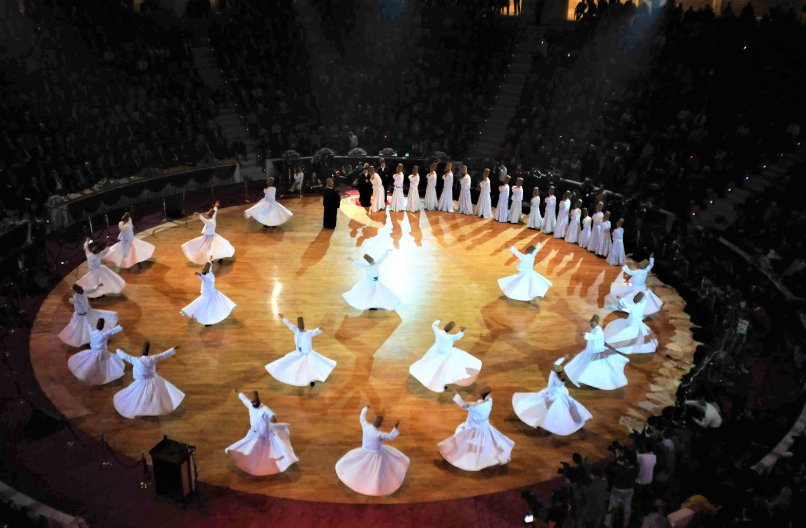
Legends and Meaning of Mevlana
The name “Mevlana” translates to “Our Master” in Persian, reflecting the deep respect and reverence people have for Rumi. He was born in 1207 in Balkh (modern-day Afghanistan) and later settled in Konya, where he became a prominent Islamic scholar and Sufi mystic. The legend of Mevlana revolves around his profound love for God and humanity, transcending cultures and religions.
One popular legend speaks of Rumi’s encounter with Shams Tabrizi, a wandering dervish who became his spiritual mentor and friend. Their intense friendship inspired Rumi to write some of his most famous poetry, emphasizing the themes of love, unity, and the quest for divine truth. This relationship is often symbolized in the museum, where visitors can feel the palpable energy of love and spirituality that Rumi and Shams shared.
Most Interesting Characteristics of the Mevlana Museum
The Mevlana Museum is renowned for several unique characteristics:
- The Tomb of Rumi: The museum houses the tomb of Rumi, which is adorned with intricate tile work and calligraphy. The tomb is a pilgrimage site for many, symbolizing Rumi’s enduring legacy.
- Dervish Hall: The museum features a dervish hall where the Whirling Dervishes perform their mesmerizing Sema ceremony. This ritual dance is a form of meditation and devotion that reflects the Sufi tradition.
- Rich Art and Artifacts: The museum contains a vast collection of artifacts, including manuscripts, religious texts, and personal belongings of Rumi and his followers. The exquisite calligraphy and tile work showcase the artistic heritage of the region.
- The Green Dome: The striking green dome of the museum is an iconic symbol of both Rumi and the city of Konya. The dome is beautifully crafted with turquoise tiles, creating a stunning visual landmark.
Why is it Worth a Visit?
Visiting the Mevlana Museum is a profound experience for several reasons:
- Spiritual Enlightenment: The museum is a place for reflection and spiritual growth. Many visitors leave feeling inspired by Rumi’s teachings of love, tolerance, and unity.
- Cultural Heritage: The museum is a treasure trove of Turkish culture and art. Exploring the museum allows you to appreciate the rich history and artistic expressions of the Sufi tradition.
- Architectural Beauty: The intricate design of the museum, with its stunning tiles, calligraphy, and beautiful gardens, is a feast for the eyes. Photography enthusiasts will find countless opportunities to capture the beauty of the site.
- Community Events: The museum often hosts events, discussions, and performances related to Rumi’s teachings. Engaging with the local community can provide deeper insights into the spiritual practices and culture.
Best Time to Visit and Dress Code
The best time to visit the Mevlana Museum is during the spring (April to June) and autumn (September to November) months when the weather is mild and pleasant. Summer can be quite hot, while winter may bring chilly temperatures, making it less comfortable for sightseeing. If you visit in December, you may also experience the special celebrations for Rumi’s birthday (December 17th).
While there is no strict dress code for visiting the museum, it is advisable to dress modestly out of respect for the cultural and religious significance of the site. Here are a few tips:
- Comfortable Shoes: As you will be walking through the museum and its gardens, wearing comfortable shoes is recommended.
- Modest Clothing: Women should consider wearing long skirts or dresses, while men should opt for long trousers. Sleeves are generally preferable.
- Light Layers: Depending on the season, bring a light jacket or shawl, especially for cooler evenings.
Open Hours and Fees
The Mevlana Museum is generally open to visitors throughout the week. The typical visiting hours are:
- Summer (April to October): 9:00 AM to 7:00 PM
- Winter (November to March): 9:00 AM to 5:30 PM
Entry Fees
As of the latest information, the entry fee to the Mevlana Museum is approximately $5. This price may vary, so it’s a good idea to check for updates before your visit. Children under a certain age may receive discounted or free entry.
Structure and Design
The Mevlana Museum is a stunning example of Ottoman architecture, characterized by its intricate tile work, domes, and elegant courtyards. The main structure includes:
1. The Tomb of Rumi:
The focal point of the museum is the tomb of Rumi, which is elegantly decorated with beautiful tiles and inscriptions. The tomb is surrounded by a tranquil garden, perfect for contemplation.
2. The Green Dome:
The iconic green dome is a defining feature of the museum, symbolizing Rumi’s teachings of love and spirituality. The dome is adorned with intricate patterns and is a popular spot for photographs.
3. Dervish Hall:
The dervish hall is a dedicated space for the Sema ceremony, where the Whirling Dervishes perform their spiritual dance. The hall’s acoustics enhance the experience, making it a memorable event for visitors.
4. Museum Galleries:
The museum features several galleries showcasing artifacts related to Rumi, Sufism, and the history of the region. Visitors can explore manuscripts, religious texts, and personal belongings of Rumi and his followers.
5. Gardens and Courtyards:
The museum is surrounded by beautifully landscaped gardens and courtyards, providing a serene environment for reflection and relaxation. The gardens are filled with flowers, fountains, and seating areas, inviting visitors to linger.
History of the Site
The Mevlana Museum has a rich history that dates back to the 13th century. Rumi settled in Konya in 1228, where he became a prominent figure in the Sufi movement. After his death in 1273, his followers constructed a mausoleum to honor him, which eventually evolved into the museum we see today.
Rumi’s Legacy
Rumi’s teachings emphasized love, tolerance, and unity. His poetry, particularly the “Masnavi,” remains influential and is celebrated worldwide. The dervish order he founded, the Mevlevi Order, became famous for its unique ceremonial practices, most notably the Whirling Dervishes.
Transformation into a Museum
In the 19th century, the mausoleum was transformed into a museum to preserve Rumi’s legacy and promote Sufi teachings. The museum officially opened to the public in 1926 and has since become a significant cultural and spiritual landmark in Turkey.
Nearby Attractions
While the Mevlana Museum is a must-visit, there are several other attractions in Konya that you should consider exploring:
1. Alaeddin Mosque:
Just a short walk from the museum, Alaeddin Mosque is one of the oldest mosques in Konya. Built in the 13th century, it features beautiful architecture and a tranquil courtyard.
2. Karatay Medrese:
This historic madrasa (Islamic school) is home to a stunning collection of Turkish tiles and ceramics. The medrese offers a glimpse into the educational practices of the Seljuk period.
3. Ince Minaret Medrese:
Another historical site, the Ince Minaret Medrese, is famous for its intricately carved minaret and beautiful architecture. Today, it houses a museum showcasing Seljuk artifacts.
4. Sille Village:
Located just outside of Konya, Sille is a charming village known for its historical sites and natural beauty. Explore the ancient rock churches and enjoy the scenic landscape.
5. Konya Archaeological Museum:
This museum features a rich collection of artifacts from the region’s history, including items from the Hittite, Phrygian, and Roman civilizations. It’s a great place to learn more about the history of Konya.
Interesting Facts About the Mevlana Museum
- Rumi’s Birthplace: Rumi was born in Balkh, present-day Afghanistan, and moved to Konya with his family due to political instability. His teachings transcended borders and cultures, making him one of the most beloved poets globally.
- Whirling Dervishes: The Mevlevi Order, founded by Rumi’s followers, is famous for its Whirling Dervishes, who perform a spiritual dance as a form of meditation and devotion.
- UNESCO Heritage Site: The Mevlana Museum is part of the UNESCO World Heritage Site list, recognized for its cultural significance and historical value.
- Global Influence: Rumi’s poetry has been translated into numerous languages, and his works continue to inspire people across the world, making him one of the most read poets in history.
- Annual Celebrations: Every December, Konya hosts the “International Rumi Festival,” celebrating Rumi’s life and teachings with various cultural events, performances, and ceremonies.
Tips for Visitors
- Plan for Crowds: The Mevlana Museum can get busy, especially during weekends and holidays. Arriving early in the morning can help you avoid large crowds and enjoy a more serene experience.
- Participate in the Sema Ceremony: If you have the chance, attend the Whirling Dervishes performance. It’s a mesmerizing experience that captures the essence of Rumi’s teachings.
- Take Guided Tours: Consider joining a guided tour to gain deeper insights into Rumi’s life and the significance of the museum. Knowledgeable guides can enhance your understanding of the site.
- Explore the Gardens: Don’t rush through the museum; take time to explore the gardens and courtyards. They offer a peaceful retreat and a beautiful backdrop for photos.
- Respect the Space: As a place of worship and reflection, be respectful of the environment and the people around you. Maintain a quiet demeanor and avoid disruptive behavior.
Is the Museum Pass Valid?
As of now, the Museum Pass (Müze Kart) is not valid for entry to the Mevlana Museum. Visitors need to purchase a separate ticket at the entrance. However, the Museum Pass is beneficial for many other museums and archaeological sites across Turkey, making it a worthwhile investment if you plan to explore more cultural attractions.
Frequently Asked Questions
1. What is the best time to visit Mevlana Museum?
The best time to visit is during spring (April to June) and autumn (September to November) when the weather is mild and pleasant.
2. How do I get to Mevlana Museum from Istanbul?
You can fly to Konya Airport or take a bus or train to Konya. From the airport or bus/train station, you can easily reach the museum by taxi or public transport.
3. How much is the entry fee for Mevlana Museum?
The entry fee is approximately 50 Turkish Lira (around $5), but prices may vary, so it’s advisable to check for updates before your visit.
4. Are there any guided tours available at the museum?
Yes, guided tours are available and can enhance your understanding of Rumi’s teachings and the significance of the museum.
5. Can I take photos inside the Mevlana Museum?
Yes, photography is generally allowed, but be respectful of other visitors and the sanctity of the site.



